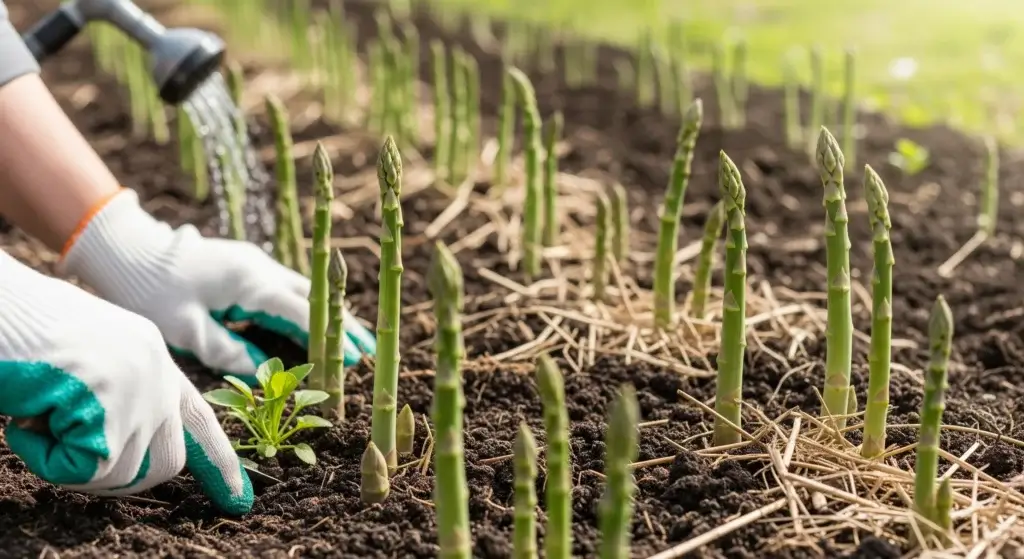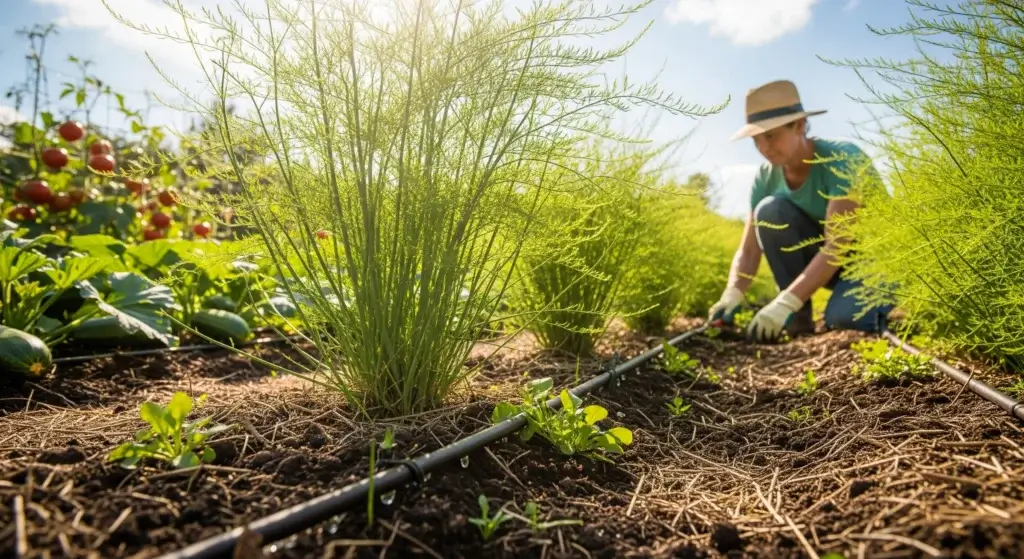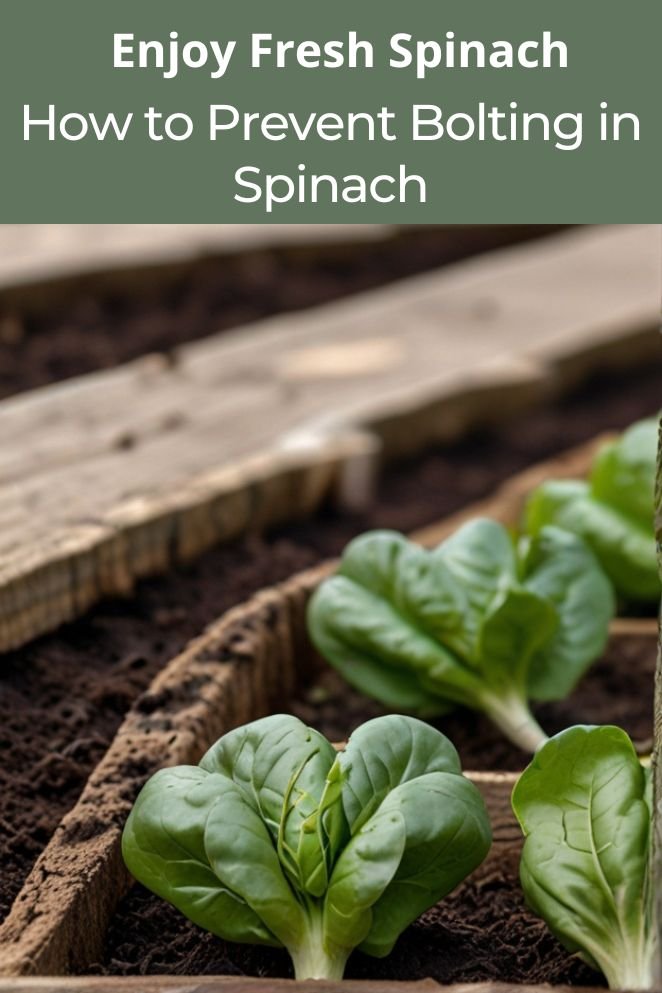
Spinach is a popular leafy green vegetable that’s easy to grow and packed with nutrients.
However, one of the biggest challenges spinach growers face is bolting, a process where the plant sends up a flower stalk and goes to seed.
Bolting can occur at any time, but it’s more common in spinach than other leafy greens.
In this article, we’ll explore the factors that trigger bolting in spinach, and provide strategies to prevent it and ensure a continuous harvest.
Understanding Bolting in Spinach
Bolting in spinach is a natural occurrence triggered by various environmental factors like temperature, daylength, and the age of the plant.
When spinach plants encounter stress, whether from extreme temperatures or prolonged exposure to daylight, they may bolt.
Furthermore, as spinach plants mature, they become increasingly susceptible to bolting.
- Read also: Beat the Bolt: 5 Tips on Preventing Bolting in Broccoli Plants
- Read also: Preventing Cauliflower Bolting: Keep Your Cauliflower Blooming
Factors That Trigger Bolting in Spinach
Several factors can trigger bolting in spinach, disrupting its growth and development:
Temperature sensitivity
Spinach is highly sensitive to temperature fluctuations, with both hot and cold stress capable of inducing bolting.
When exposed to hot weather, spinach plants may bolt when temperatures surpass 65°F (18°C).
Conversely, in cold conditions, temperatures dipping below 40°F (4°C) can also prompt bolting, as the plant seeks to reproduce before potentially adverse conditions set in.
Daylength influence
Daylength plays a crucial role in spinach growth, with longer days often signaling the onset of flowering.
As spring progresses and daylight hours increase, spinach plants may perceive these extended periods of light as a cue to initiate flowering.
This response is particularly pronounced in varieties adapted to specific latitudes, where changes in daylength are more pronounced.
Plant maturity
The age of spinach plants significantly influences their susceptibility to bolting.
Older plants, having reached maturity, are more prone to bolting compared to younger counterparts.
As spinach plants mature, they accumulate energy reserves and transition from vegetative growth to reproductive stages.
Consequently, older plants are predisposed to allocate resources towards flowering and seed production, leading to bolting.
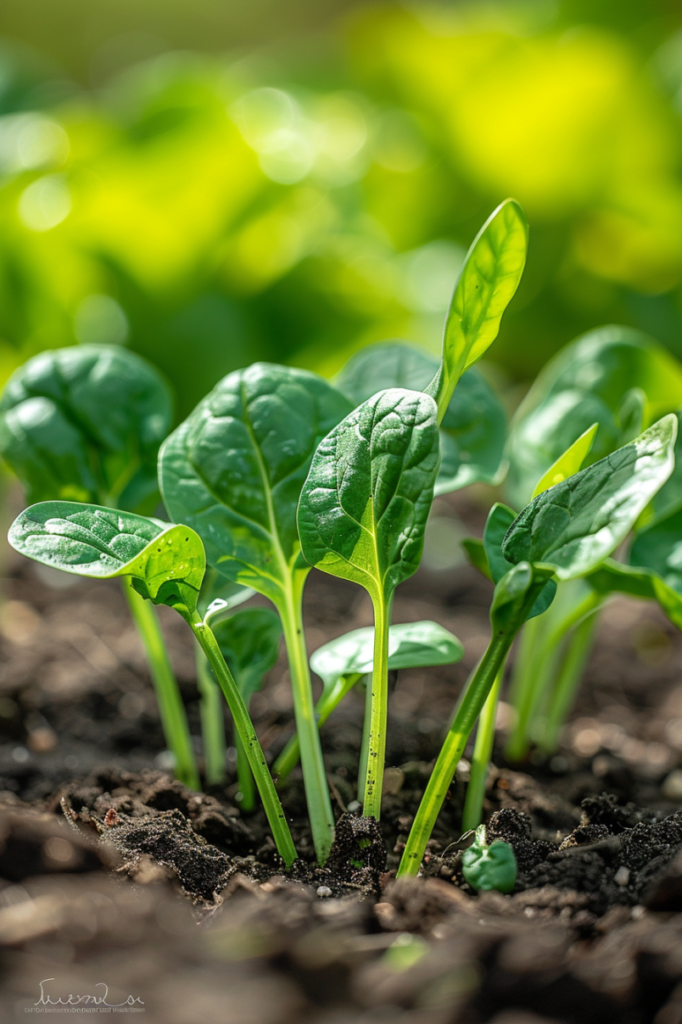
Strategies to Prevent Bolting
To effectively prevent bolting in spinach and maintain a steady supply of fresh greens, consider implementing the following strategies:
Planting at the right time
Timing is crucial when it comes to planting spinach to minimize the risk of bolting.
Optimal planting times typically coincide with cooler seasons, such as spring and fall, in most climates.
By planting spinach during these periods, you can allow the plants to establish and mature before encountering the extremes of summer heat or winter cold, which can trigger bolting prematurely.
Choosing the right variety
Selecting the appropriate spinach variety is essential for bolting prevention.
Look for bolt-resistant varieties specifically bred to withstand environmental stressors and prolong leafy growth.
Conduct research to identify varieties that are well-suited to your local climate and growing conditions.
Choosing the right variety increases the likelihood of a successful harvest with minimal instances of bolting.
Providing optimal growing conditions
Creating ideal growing conditions is paramount for preventing bolting and promoting healthy spinach growth.
Ensure that the soil is well-drained, as waterlogged conditions can stress the plants and trigger premature bolting.
Maintain consistent moisture levels by watering regularly, especially during dry periods.
Moderate fertilization with a balanced fertilizer can supply essential nutrients without promoting excessive growth, which may increase the risk of bolting.
Spacing and air circulation
Proper spacing of spinach plants is crucial for preventing overcrowding, which can contribute to bolting.
Adequate spacing allows for optimal air circulation around the plants, reducing humidity and the risk of fungal diseases that may stress the plants and trigger bolting.
Follow spacing recommendations provided for the specific spinach variety you’re growing to ensure adequate room for growth and airflow.
Succession planting
Implementing succession planting techniques can help stagger spinach plantings throughout the growing season, ensuring a continuous harvest and reducing the likelihood of bolting.
By sowing spinach seeds at regular intervals, typically every few weeks, you can maintain a steady supply of tender leaves while minimizing the impact of environmental cues that trigger bolting.
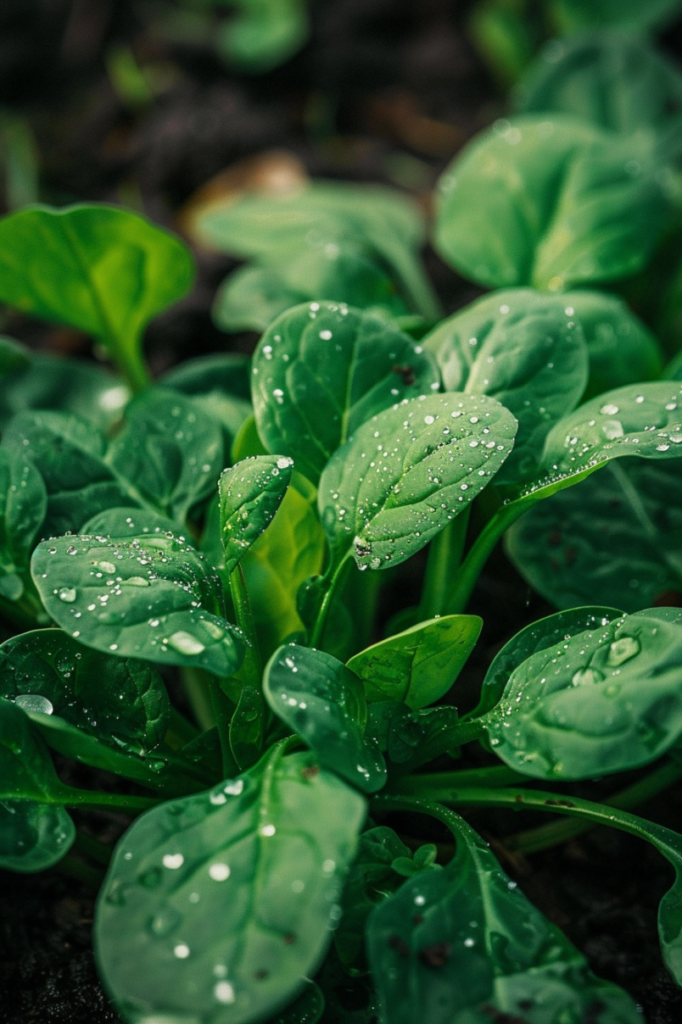
Bonus Tip: Harvesting Techniques to Extend Your Harvest
To maximize your spinach harvest and minimize the risk of bolting, employing strategic harvesting techniques is key.
Here’s how to harvest spinach effectively to extend your bounty:
Harvest young leaves
When harvesting spinach, target the outer leaves that are around 2-3 inches tall.
Younger leaves tend to be more tender and flavorful, making them ideal for culinary use.
By selectively harvesting the outer leaves, you encourage the plant to continue producing new growth from the center, prolonging the harvest period and delaying bolting.
“Cut and Come Again” method
Rather than uprooting the entire plant, adopt the “cut and come again” method for harvesting spinach.
With sharp scissors or shears, snip off individual leaves or stems at the base, leaving the central crown intact.
This approach allows the plant to regrow and produce additional leaves, providing a continuous supply of fresh greens throughout the growing season.
Harvest regularly
Consistent harvesting is essential for preventing bolting and maximizing spinach production.
Aim to harvest spinach every few days, especially during cooler weather when the plants are less prone to stress.
Regular harvesting signals to the plant that it needs to continue producing leaves rather than diverting energy towards flowering and bolting.
Consider weather conditions
When planning your harvesting schedule, be mindful of weather conditions to avoid stressing the plants unnecessarily.
Avoid harvesting spinach during the hottest part of the day, as high temperatures can cause stress and reduce the plant’s vigor.
Instead, opt for early mornings or evenings when temperatures are cooler and the plants are less likely to wilt.

- Read also: Saving Your Cabbage: Preventing Premature Bolting in Cabbage
- Read also: A Comprehensive Guide: Inorganic vs Organic Fertilizers
Conclusion
Preventing bolting in spinach requires a combination of careful planning, attention to growing conditions, and strategic harvesting techniques.
By planting at the right time, choosing the right variety, providing optimal growing conditions, and using succession planting, you can enjoy a continuous harvest of fresh spinach.
Remember to harvest regularly to encourage leaf production and prevent bolting.

